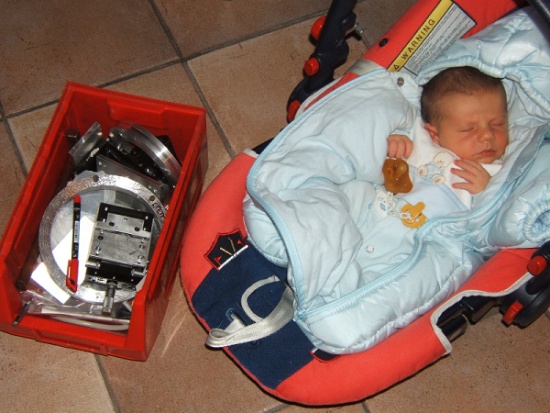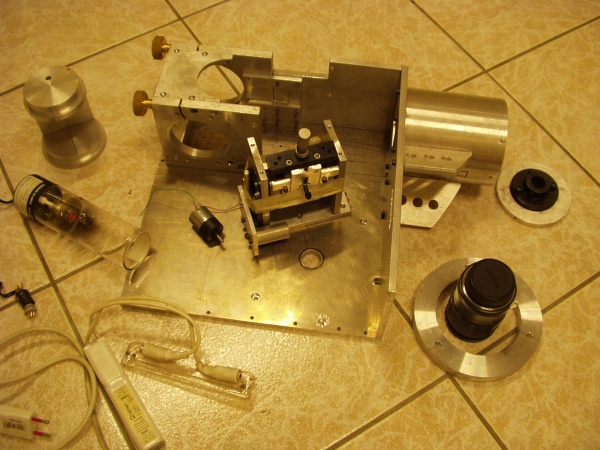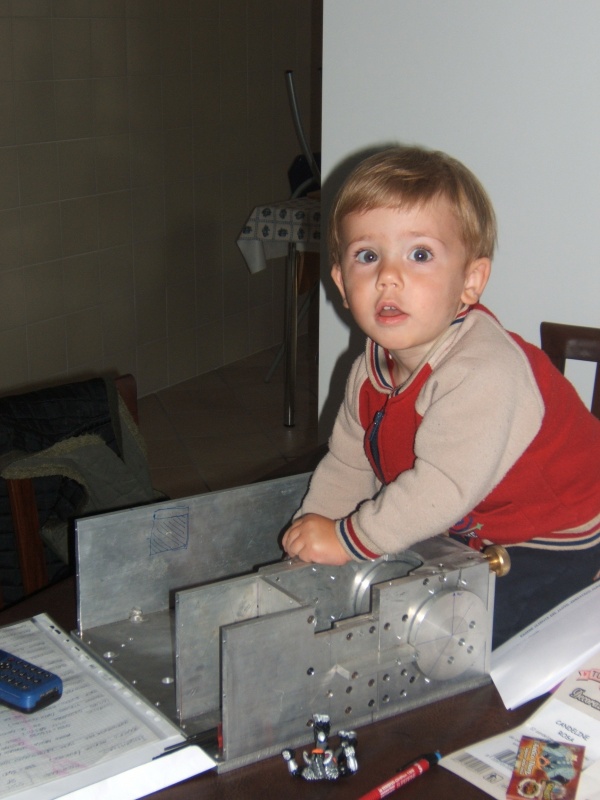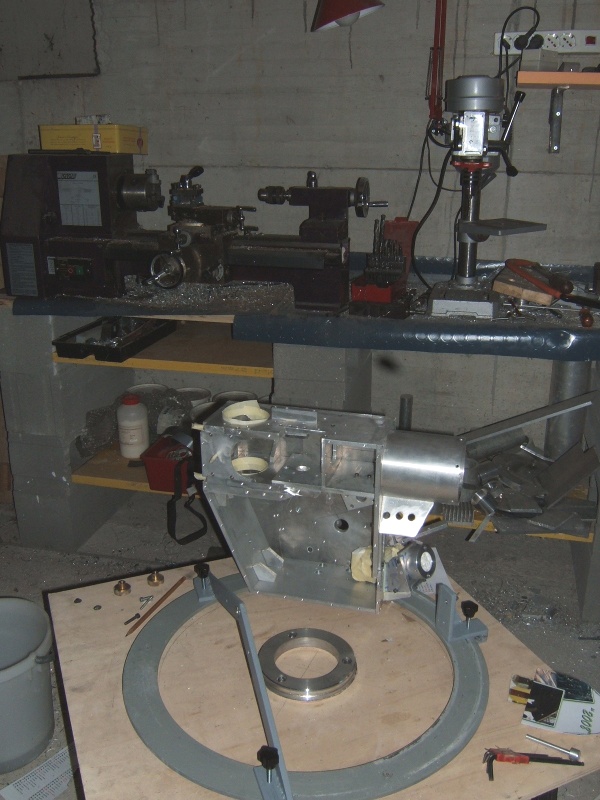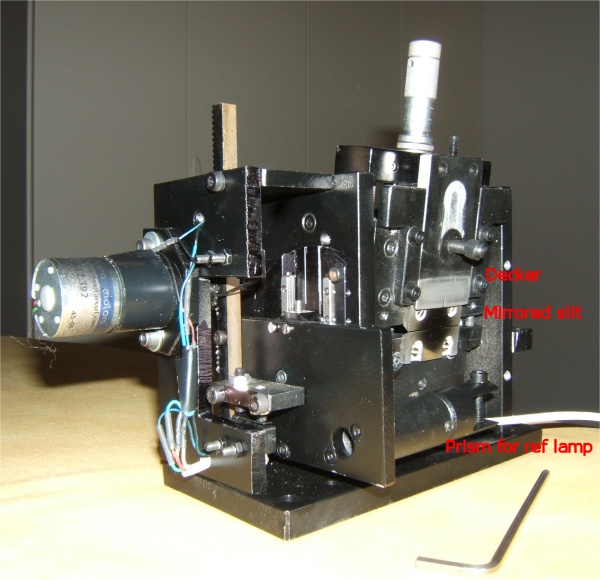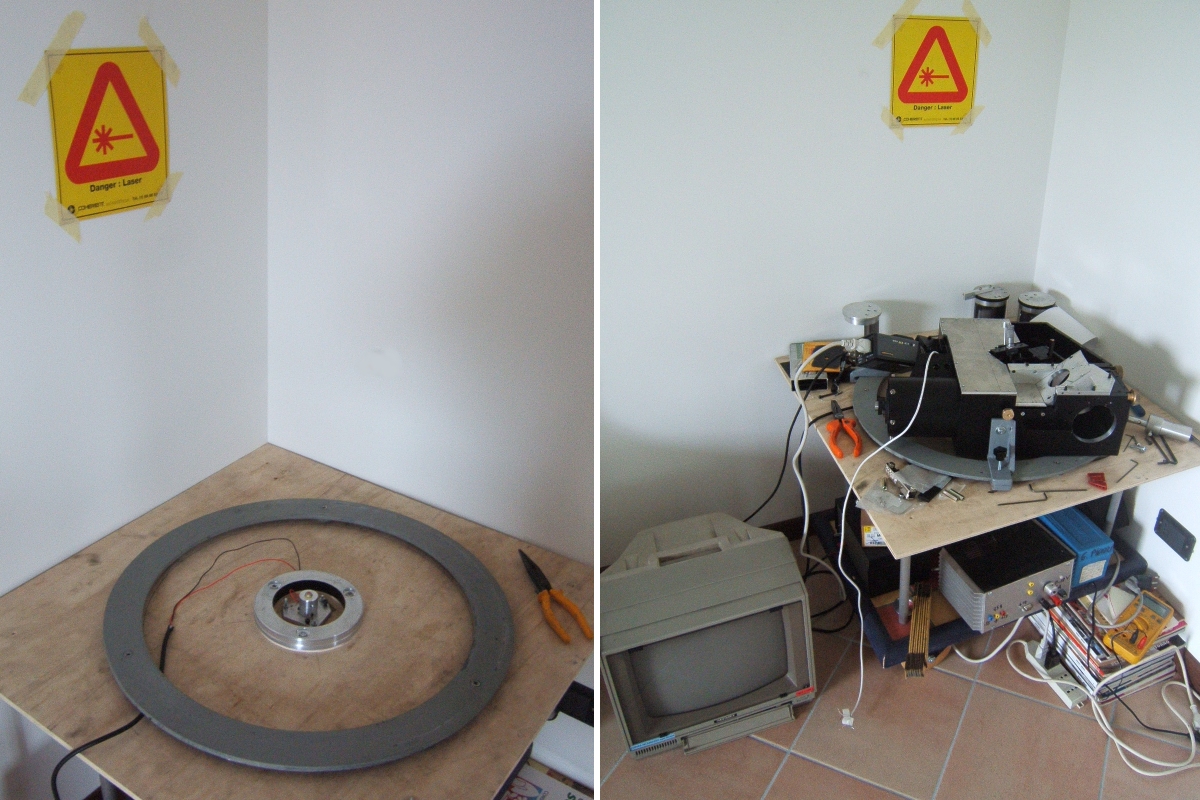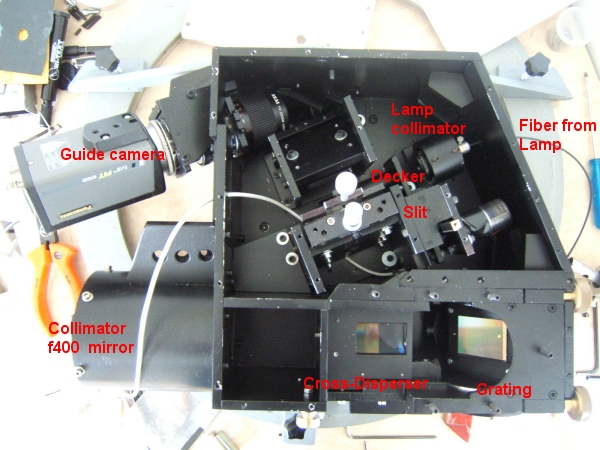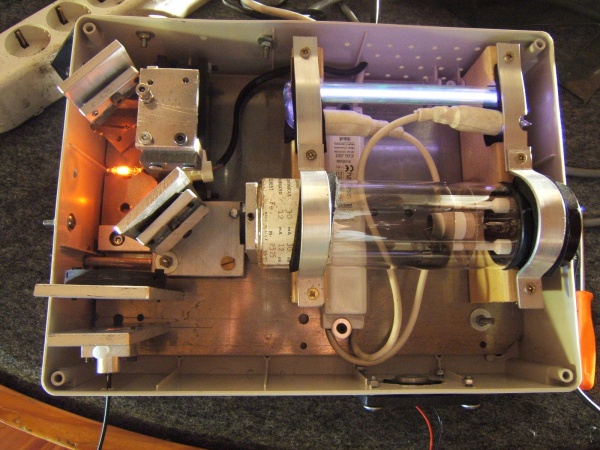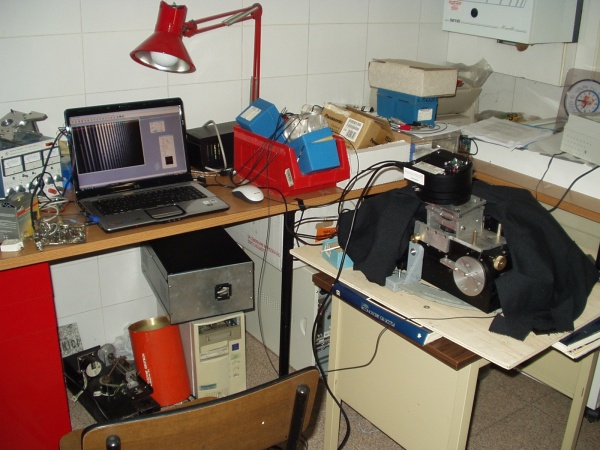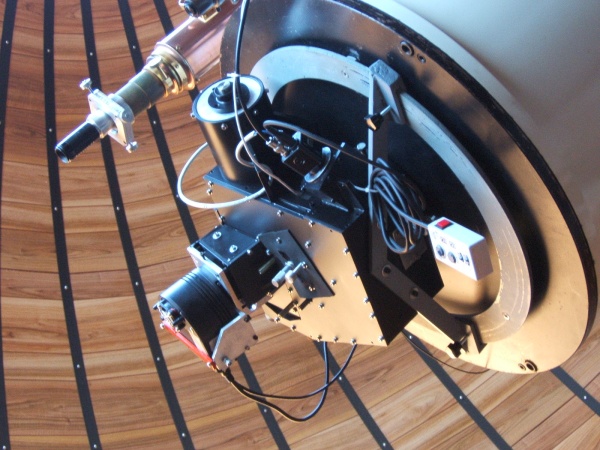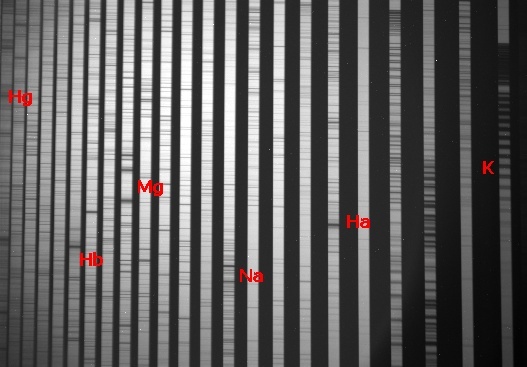Design guidelines
Design take advantage of experience gained from the use of previous
longslit spectrograph that was
working since october 2004 in monitorning of novae and symbiotic stars within
ANS program .
The mail goal was to develop a much more stable spectrograph, with rigid mechanics, in order to achieve
a good precision in radial velocity measurements while maintaining a lot of choice of dispersions
and spectral ranges easily available.
When we purchased gratings from Optometrics, we saw that echelle gratings were available too at an affordable price and decided to make
echelle-mode an optional optical beam in the spectrograph. The picture below shows how we obtained this, using an additional mirror and a
transmission grating (300 l/mm) as cross-disperser. Echelle grating is a 79 l/mm R2 grating (25x50mm) and due to the 14 degree working
angle is a little overfilled by the 20 mm diameter optical beam resulting in a 10% loss of light.
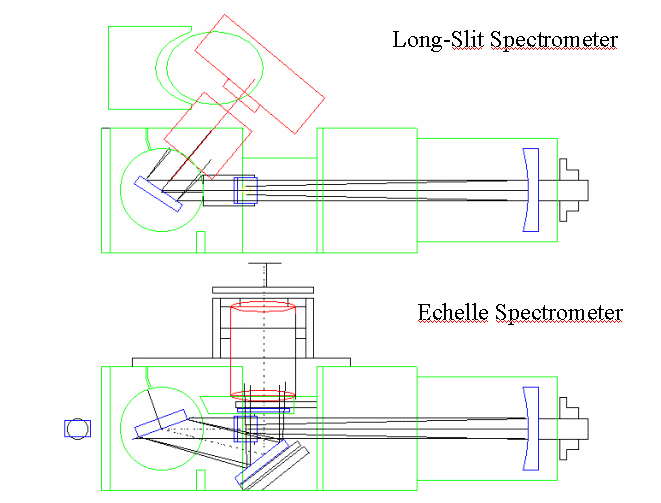
|
|
Picture 1: Both echelle and longslit mode are available in our spectrograph. Switching from echelle to normal grating can be done in less than
5 minutes. Both dispersive system use the same parallel F/20 beam from the spherical collimator f=400 mirror.
|
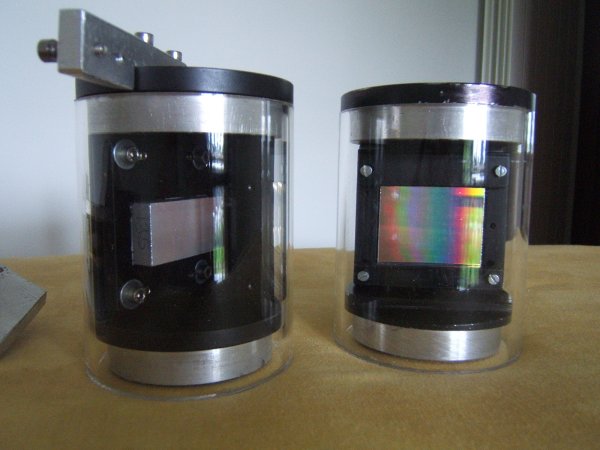
|
|
Picture 2: Gratings are interchangeable. Available dispersions are 4.3 A/pix (300 l/mm),
2.1 A/pix (600 l/mm), 0.75 A/pix (1200 l/mm) and 0.2 A/pix (approx) with echelle.
|
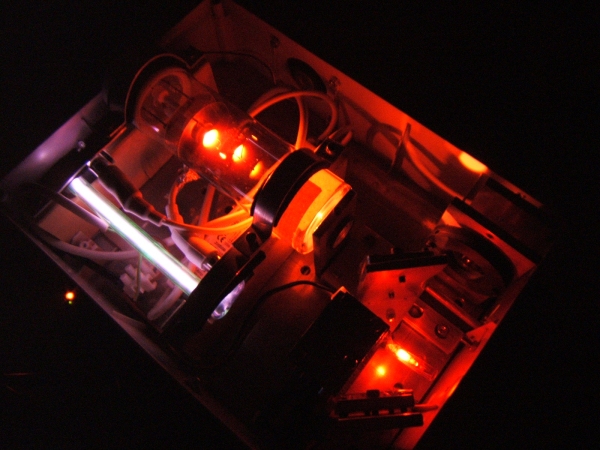
|
|
Picture 3: A fascinating image of all spectral lamps swtched on. HCL Fe(Ne) lamp is the bigger one. The long blue is Ar and the smaller one in Ne.
Unfortunately Fe(Ne) lamp is rich of line only in the regions 4000-6000 and over 7300 A. A similar HCL Th(Ar) lamp is mounted instead since August 2009
and as much as 400 lines ca be used for wavelenght calibration.
|
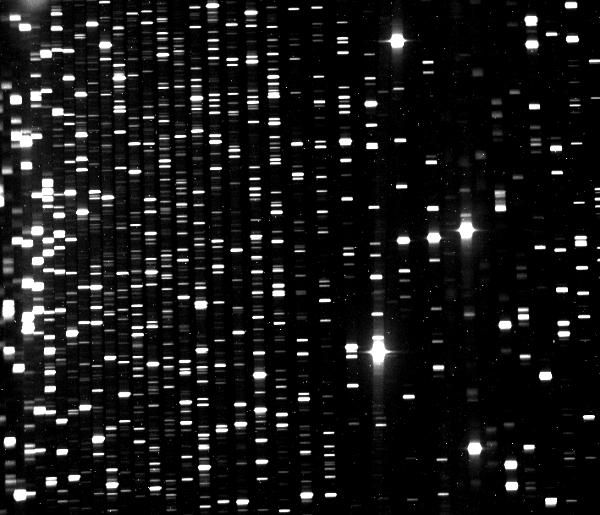
|
|
Picture 4: Th(Ar) ref lamp recorded in echelle mode from 4000 (left size) to 8600 A (right size). Defocus
is unfortunately present at either sizes of the spectral range. PSF for spetra is somewhat better due to smaller
filling of the entrance pupil. The lenght of the slit in echelle mode is 1 mm that is equivalent to 17 arcsec on the sky.
|
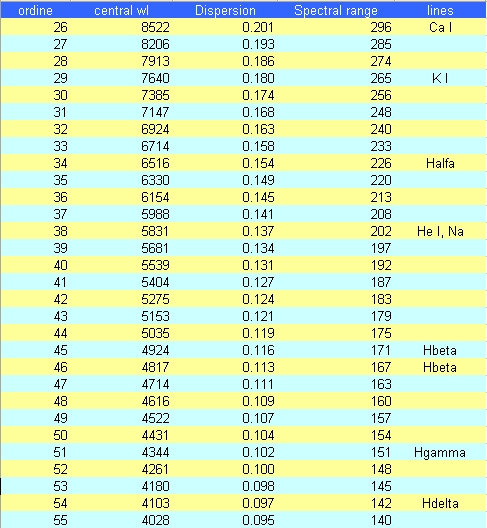
|
|
Picture 5: Data on dispersion, central wavelenght and spectral coverage of the orders that are recorded on the CCD in our echelle spectrograph.
Overlap of spectral orders is complete up to 8000 Angstrom. The spectrograph camera is a Canon 100 mm F2 lens.
|
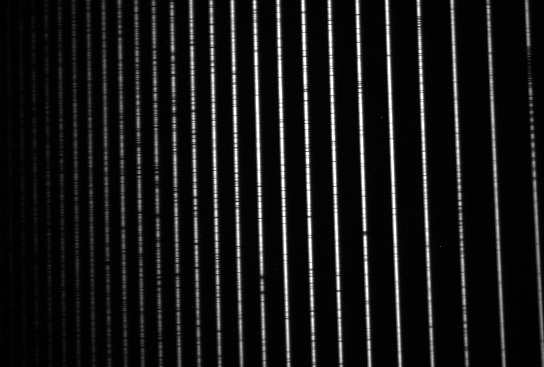
|
|
Picture 6: spectrum of Radial Velocity standard HR 8308. Tests on a set of radial velocity standards show that radial velocities measured with our
echelle spectrograph are accurate to 500 m/sec if calibration lamp frames are recorded before and after the science exposure of 900 sec.
|
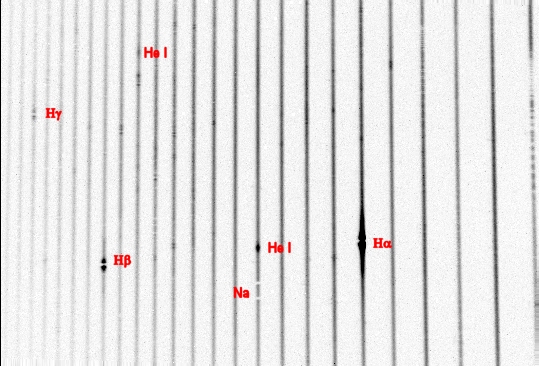
|
|
Picture 14: Raw spectrum of CI Cyg at beginning of outburst is the first science target of our new spectrograph in echelle mode. 6x900 sec exposure on 16th Sept 2008.
|
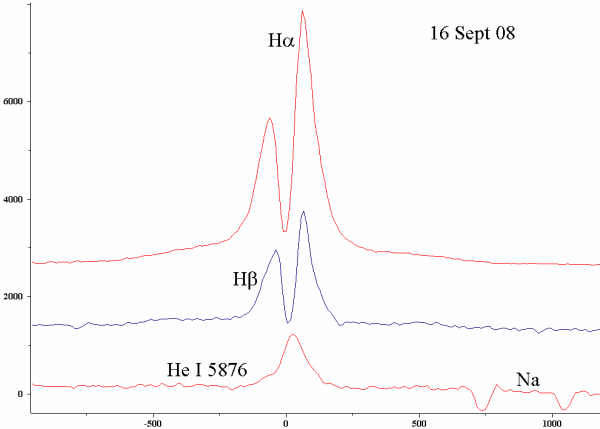
|
|
Picture 15: Orders extracted from previous 2D image containing Halpha, Hbeta and He I 5876. Amount of information on a single echelle spectrum is
huge. S/N is not bad for a V=9.6 star.
|








